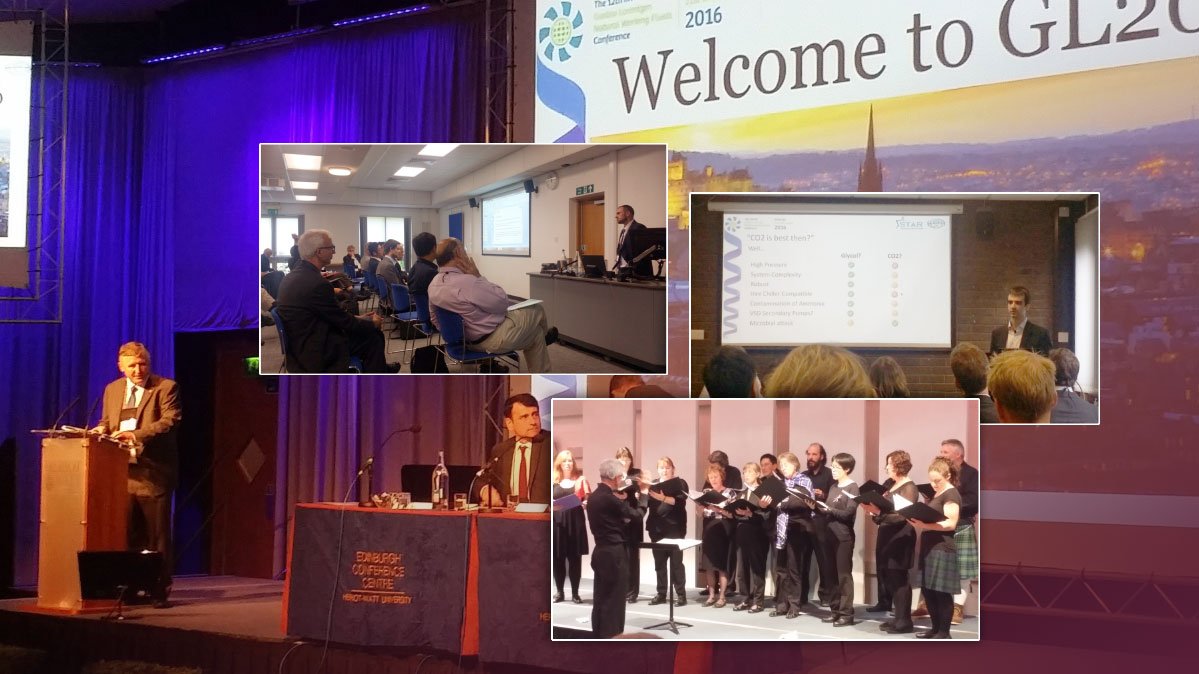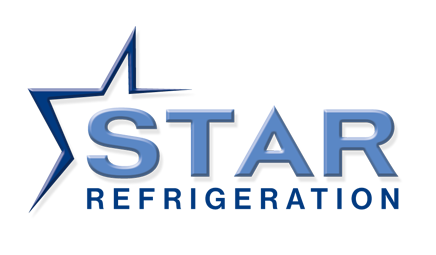Centre Stage for Natural Refrigerants at The IIR Gustav Lorentzen Conference

The International Institute of Refrigeration’s 12th Gustav Lorentzen Natural Working Fluid Conference is currently taking place at Herriot-Watt University in Edinburgh, with the attendance of over 200 international delegates from different backgrounds within the refrigeration industry. A highlight in the industrial refrigeration calendar, the Gustav Lorentzen conference – which runs until August 24 – kicked off last Sunday, bringing a whole host of experts and industry leaders. Star Refrigeration was there to provide insight and knowledge on the latest developments in low charge ammonia, CO2 refrigeration and air and water source heat pumps for district and industrial use. With a total of nine presentations and two technical tours to their state of the art CO2 and ammonia installations at two distribution centres in the area, Star Refrigeration is a major contributor to this year’s event. And it did not fail to inspire during the first two days as sessions became fully booked. Rob Lamb, Star Refrigeration Group Sales and Marketing Director, said, “The conference provides invaluable networking and learning opportunities for all involved , and as such, is imperative for all industry stakeholders with an interest in natural refrigerants and in the role refrigeration will continue to play in achieving a more sustainable future”. The event commenced with the SuperSmart Workshop once registration was completed and provided attendees with first-hand insight into the newly started, EU funded project. The scheme aims to remove non-technological barriers for the implementation of energy efficient and eco-friendly technologies in supermarkets, as well as create the starting point for an EU Ecolabel for supermarkets. In the evening, delegates took advantage of a networking and welcome session before being treated to a live concert performed by the Strathclyde University Chamber Choir. The musical programme included a range of songs in honour of Scottish poet Robert Burns, also known as Rabbie Burns, as the Chairman of the conference, Andy Pearson explained just before joining the choir to sing along. Day two started off with the presentation of student prizes, awarded to those who showed outstanding dedication. Alexander Von Bismarck of the Environmental Investigation Agency presented a keynote speech highlighting the current status of natural refrigerants use. He also noted that the framework for the phase down of high GWP HFCs is expected to be “locked in” in the Montreal Protocol in two months time. Looking at the industry to date as well as future challenges, Carole Bond of Carbon Data Resources then addressed delegates with the question “What is the role of natural refrigerants in achieving the targets set out in COP21?”. A wide variety of responses were shared amongst the audience, including energy efficiency linked to the use of natural refrigerants, improvement of installation standards and customer awareness, inclusion of CO2 related tax as a driver, more visible GWP figures, and considerations of total environmental effect of refrigerants -not just on global atmosphere but also the impact of synthetic refrigerants on water. The paper sessions were set to be all about learning, analysing and sharing ideas. Hosted by some of the most well-known experts in the sector, speakers discussed some of the refrigeration industry’s hottest topics. A host of Star’s very own specialists addressed delegates on a range of topics. The most popular presentations tackled issues on somehow controversial subjects. Bruce Smeaton, a consultant for Star Technical Solutions talked about ‘What is the best natural refrigerant?’ And ‘What is the best refrigeration system?’ “Experts usually give quite vague answers when asked what is the best refrigerant and the best refrigeration system. I wanted to tabulate and quantify all the most relevant thermodynamic, economic, environmental and safety aspects into a structured approach that is easily digestible”, Smeaton said. On a more historical note, Andy Pearson, Star Refrigeration’s Group Managing Director addressed the main auditorium to examine the concept for heating and cooling buildings by currents of air. The idea was presented in 1852 by Professor William Thomson of Glasgow University, who for the first time discussed the use of a heat pump in an academic paper. Shedding light on the important lessons learned from the paper and its relevance in the justification of the adoption of heat pumps in modern systems, Pearson analysed the viability of Lord Kelvin’ claims of a potential COP of 35against current thermodynamic knowledge. Taking a rounded approach, Andrew Lamb, Senior Technical Designer at Star Refrigeration stepped up to talk about the elements to consider in the design of large ammonia heat pumps to enhance payback and provided guidance on the cost effectiveness of extra heat exchangers and non standard arrangements. John Clark, Consultant of Star Technical Solutions explained the choice between pumped glycol and pumped CO2 , including the difference between capital cost and operation cost of each and looked at the potential operating issues. Tuesday was set to be just as intriguing for attendees with the inclusion of additional, more practical activities. Star Refrigeration gave delegates guided, technical tours of some of their refrigeration installations in the area. Taking them to one of the country’s major retail operators’ distribution centre in Falkirk and to the Brakes Brothers facilities in Newhouse, the tours showed delegates the innovative technology used at the CO2 and ammonia sites. The Brake Brothers tour highlighted how the refrigeration systems combine low ammonia charge with high efficiency. David Blackhurst, director of Star Technical Solutions, led visitors through an inspection of the refrigeration and associated safety systems installed. The visit was followed by a short course on ammonia safety in low charge ammonia systems which reviewed the design strategy and decision-making process that led to the development of the low charge ammonia system, as well as its positive impact on site safety, while comparing the results to a more traditional ammonia refrigeration system design. Star’s CO2 and ammonia refrigeration plant incorporated cutting edge technology when it was installed at the supermarket’s distribution centre in Falkirk over twelve years ago. Star Refrigeration Technical Director Angus Gillies guided the visit, providing an overview of the refrigeration plant’s design, installation and operation. Delegates then undertook a short course entitled ‘Advancement in ammonia and CO2 plant and design: what we can learn from the past?’, which highlighted the benefits of the innovative design and explained the specific differences that are applied to the refrigeration system design and installation today after a decade’s worth of analysis and research. The afternoon consisted of more sessions, with Gillies, who was honoured with the Lightfoot Medal Award at the IOR dinner in February, using his in-depth knowledge on natural refrigeration technology gained over years of research and design of industrial applications to address delegates on the distinct challenges that exist in the design of large carbon dioxide refrigeration plants to assure reliability. Over the course of today, a keynote address from Consultant Ray Gluckman on the opportunities and barriers for natural working fluids is set to precede the final sixty technical presentations on a variety of topics. These will include papers from Star Refrigeration’s Business Development Manager, Dr. Lewis Brown who will present a paper on “Experimental measurements and computational predictions of the gas flow field in a refrigerant helical oil separator”. Star Technical Solutions consultant Dermot Cotter will demonstrate “A Systematic Approach to Risk Assessing Ammonia Refrigeration Systems” and will then be followed by Dr Pearson who will explore, in a second intervention at the conference, his paper on “Ventilation for Ammonia Systems” The conference will wrap up this afternoon, after a closing session from the Conference Chairman Dr Pearson. Delegates remaining in Edinburgh this evening will be able to apply for a free ticket to the Edinburgh’s famous Tattoo. The 2016 IIR Gustav Lorentzen Natural Working Fluids Conference is being held at Heriot Watt University in Edinburgh.
Centre Stage for Natural Refrigerants at The IIR Gustav Lorentzen Conference

